
Truro Anglican Church is an Anglican church in Fairfax, Virginia, USA.
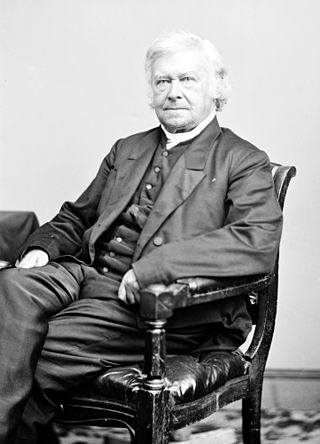
Jackson Kemper in 1835 became the first missionary bishop of the Episcopal Church in the United States of America. Especially known for his work with Native American peoples, he also founded parishes in what in his youth was considered the Northwest Territory and later became known as the "Old Northwest", hence one appellation as bishop of the "Whole Northwest". Bishop Kemper founded Nashotah House and Racine College in Wisconsin, and from 1859 until his death served as the first bishop of the Episcopal Diocese of Wisconsin.

The Diocese of Fond du Lac was a diocese of the Episcopal Church in the United States of America, encompassing the northeastern third of Wisconsin. The diocese contained about 3,800 baptized members worshiping in 33 locations. It was part of Province 5. Diocesan offices were in Appleton, Wisconsin as were the diocesan Archives. Matthew Gunter was its final bishop. On May 4, 2024, the diocese voted to be disestablish itself and reintegrate into the Diocese of Wisconsin.

The Diocese of the Mid-Atlantic is an Anglican Church in North America diocese, encompassing Virginia, Maryland, Washington, D.C., and northeastern North Carolina, with 38 congregations, including several church plantings. The diocese was originally organized in 2006 as the Anglican District of Virginia when a group of Virginian congregations withdrew from the Episcopal Church. It achieved diocesan status on June 21, 2011.

The Falls Church is an historic Episcopal church, from which the city of Falls Church, Virginia, near Washington, D.C., takes its name. Established in 1732, the parish in 1769 built a brick church building that remains in use today.
The Evangelical Anglican Church of America (EACA) was a traditional and conservative Christian church headquartered in Brea, California. It was constituted in 1992 in order to stand against the perceived apostasy of the Episcopal Church in matters of theology, liturgy and morality.

St. James' Episcopal Church, named for James the Greater, is a historic Episcopal church located in Manitowoc, Wisconsin. The only Episcopal church in Manitowoc County, St. James' is a "broad church" parish in the Diocese of Fond du Lac. It is the oldest continually operating congregation in Manitowoc County, first meeting in 1841. and organizing in 1848. The current church building, an example of Gothic Revival architecture, was consecrated in 1902. The congregation is active in community service and social justice ministries.
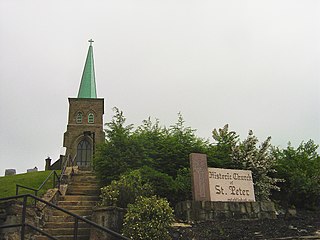
The Historic Church of St. Peter is a Roman Catholic church in Brownsville, Pennsylvania, in the Diocese of Greensburg. The Historic Church of St. Peter also has a partner parish in Grindstone, Pennsylvania named St. Cecilia's Roman Catholic Church, which was built in 1931.
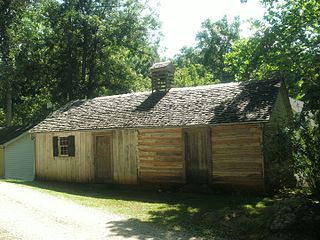
Bear Mountain Indian Mission School is a historic Native American missionary school in Amherst, Virginia.
Gordon Randolph was a journalist for the Milwaukee Journal Sentinel from 1938 to 1980. Born in Waterloo, Iowa, he grew up in Milwaukee, Wisconsin and graduated from the University of Wisconsin–Madison. He wrote many articles about his family. For example, in one news clip he wrote about how, in the 1950s, he took his family on a trip out west and only spent $500.
Lester Voigt was an American conservationist and the first secretary of the Wisconsin Department of Natural Resources.
A.L. Gebhardt & Co. was a leather tanning company founded in 1895. It operated in Milwaukee, Wisconsin and Berlin, Germany It produced leather for shoes, handbags and belts. It was owned by U.S. Leather in the late 1980s. Operations were ceased by U.S. Leather in 2000.
The MECCA Great Hall was a 6,500-capacity convention center located in Milwaukee, Wisconsin, which existed from 1974 to 1998. It had 66,000 square feet of space with a 45-foot-high ceiling, and was part of the MECCA Complex. The Baird Center was built as a replacement for the hall.
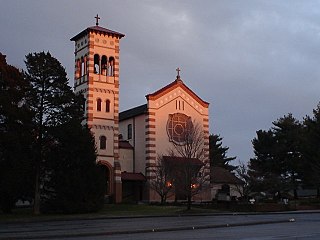
St. Mary's of the Barrens Church is a Catholic Church and former seminary in Perryville, Missouri. St. Mary's is the historic seat of the American Vincentians and since its establishment in 1818 has served as an educational institution, a Vincentian house of formation, and a Vincentian community residence. The complex of eight contributing buildings, one contributing site, and two contributing structures was listed on the National Register of Historic Places in 1995 as St. Mary's of the Barrens Historic District. St. Mary's is the home of the National Shrine of Our Lady of the Miraculous Medal.
Lisette Schandein, aka Lisette Best Schandein, Lizette Best, Elizabeth Best, Elizabeth Best Schandein, and Lizette Best Schandein was the first vice-president of Pabst Brewing Company. She held the position from 1888 through 1894.

The Anglican Diocese of the Living Word, formerly the Missionary Diocese of CANA East, is a diocese of the Anglican Church in North America (ACNA). It was one of the four missionary dioceses of the Convocation of Anglicans in North America, a dual church body of the ACNA and the Church of Nigeria. It is officially a full member diocese of ACNA since June 2013. It comprises 42 congregations in 19 American states, with congregations as far as California and Florida but with most concentrated in the northeastern and mid-Atlantic regions. The diocese is divided into nine archdeaconries: Central New York, the Chesapeake, Long Island, the Mid-Atlantic, the Northeast, northeastern New York, the Ohio Valley, the South and the Midwest. The diocese also sponsors a mission in Haiti that includes nine additional congregations. The diocesan office is located at McLean, Virginia. The diocese also includes two affiliated religious communities: the Franciscan Brothers of Bucksport and the Community of St. Mary (East) in New York.
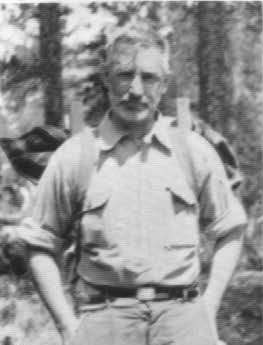
Ray Zillmer was an American attorney, mountaineer and conservationist. He is best known as the founder of the Ice Age Park and Trail Foundation, Inc. and originator of the Ice Age Trail. He was also instrumental in the conservation of land in the Kettle Moraine of southeast Wisconsin and had an indirect role in the creation of the National Trails System. He died in Milwaukee on December 13, 1960 of heart complications.

Lucien Lee Kinsolving was first bishop of the missionary diocese that eventually became the Anglican Episcopal Church of Brazil. He was a graduate of the Virginia Theological Seminary.
Felix Clarence Orji is a Nigerian-born American Anglican bishop. A former Episcopal priest who left the Episcopal Church as part of the Anglican realignment, Orji was consecrated a bishop in Nigeria in 2011 to serve the Convocation of Anglicans in North America. Since 2013, he has been the diocesan bishop of the Anglican Diocese of All Nations, which was a dual member of both the Church of Nigeria and the Anglican Church in North America from 2013 to 2019, a member of the Church of Nigeria North American Mission from 2019 to 2022, and a sole member of the ACNA since 2022.

St. Bartholomew's Anglican Church is an Anglican church in Tonawanda, New York. It is the pro-cathedral of the International Diocese in the Anglican Church in North America. The congregation is a successor to St. Bartholomew's Episcopal Church, founded in the Diocese of Western New York in 1955. In 2008, the clergy and members of St. Bart's left the Episcopal Church during the Anglican realignment and founded the current congregation, which now occupies the former site of Temple Beth-El in Tonawanda.
















